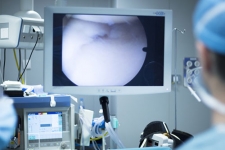Posted in: Joints | Posted on: 15-Mar-2016 Well, it’s the result of the median nerve – which runs from the forearm to the palm of the hand – becoming compressed at the wrist. This can happen because, to get from the forearm to the hand, the nerve must pass through the “carpal tunnel”, which is a narrow passageway comprised of both bone and ligaments and is located at the base of the hand. For a variety of reasons, the tunnel can narrow and compress the nerve…leading to weakness, pain, and numbness that can affect the entire arm (as opposed to just the hand and wrist).
Read more








